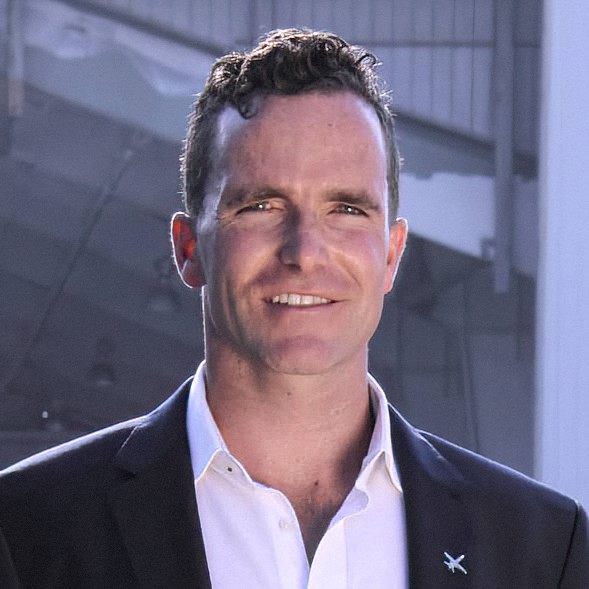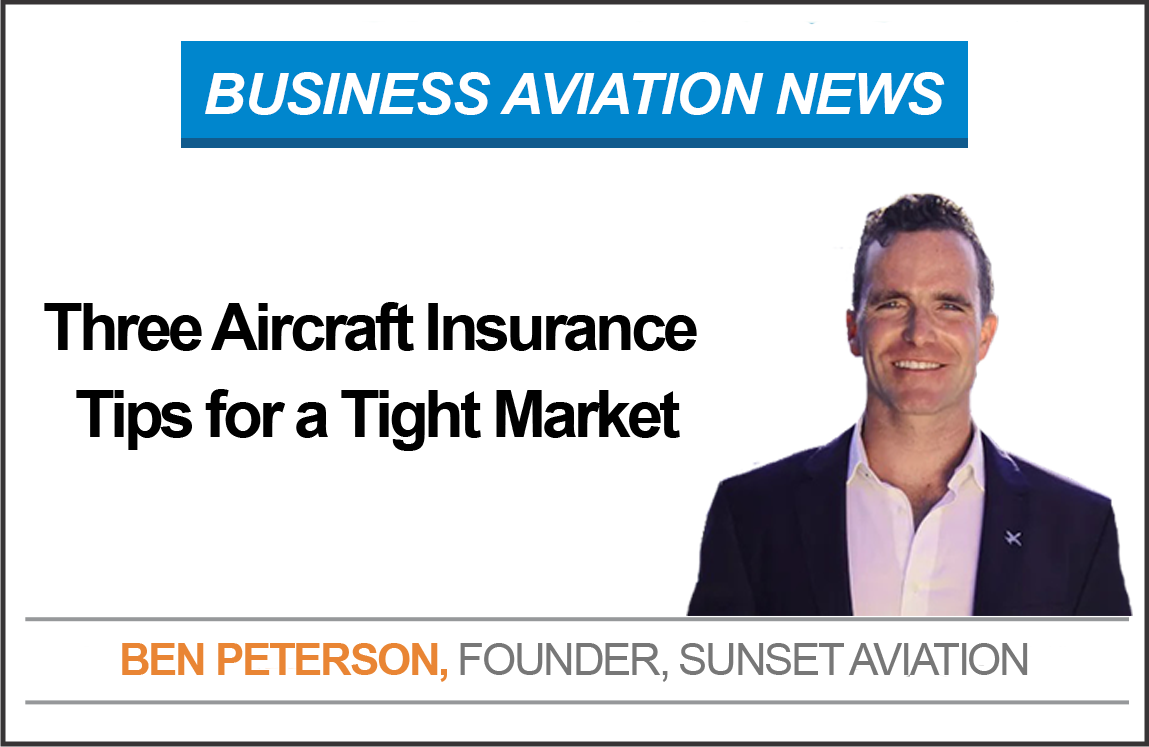While there’s not much a flight department manager can do about the rising cost of airplane insurance currently, Benjamin Peterson of Sunset Aviation shares tips on how to qualify for the best premiums available…
You’ve probably already noticed an uptick in aviation insurance rates recently. Premium costs in some cases have increased by 20%, while others have seen an almost 100% spike in premium rates.
These price fluctuations lead to a tighter aviation insurance market, which is why many are finding it challenging to find the best coverage for their aircraft at a desired rate.
But where does this premium value come from? Are underwriters throwing a dart at the wall and making up numbers? What constitutes a fair deal, and why? And what are the factors considered when determining a premium rate? Let’s find out…
Aviation Insurance Premiums are Cyclical
Like all other insurance products, aircraft insurance is based on the idea that the losses of the few are covered by the premiums paid by the many.
If you ask veteran pilots, they’ll tell you that the past decade has been a decade of extremely low aviation premiums. Prices reached this all-time low due to competition between insurance companies vying for more business.
However, catastrophic disasters like hurricanes and wildfires have caused losses in the insurance sector over the last few years and have forced insurers to increase their premiums to respond effectively to future incidents.
To make matters worse, significant numbers of aircraft have remained mostly grounded in 2020/2021 due to COVID-19 lockdown restrictions. Many insurers have had to start refunding premiums as aircraft stand parked in hangars.
The overall macro trend of low interest rates means Property and Casualty insurance companies will have to replace their fixed income yield with higher insurance rates.
The tightening of the market has also forced many underwriters to leave the aviation sector. As a result, the competition has dropped, and now only a handful of insurance companies serve aircraft owners. Naturally, premium rates are shooting up.
While this upward trend in premium rates is a matter for concern, the good news is that aviation insurance premiums are cyclical in nature.
These prices will come down again over the next few years, once the market stabilizes – although the higher rates are likely to stay, at least for the short-term and until insurance companies figure out the right price point to ensure stability and predictability in the event of future catastrophic losses.
So, if you’re looking to get coverage for your aircraft in this turbulent season, there are a few crucial factors you need to consider.
1. Ensure Your Aircraft is Properly Valued
If you’re buying insurance for your business jet or turboprop, a major chunk of your total annual premium will go towards hull value insurance. Hull premiums usually account for 60-70% of your total premium, depending on the policy you choose.
While hull insurance is necessary to cover physical damage to your airplane, the coverage you’ll get depends on your aircraft’s current market value.
By making sure that your aircraft is appropriately valued (not over- or under-insured), you’ll have a better chance of getting the top underwriting interest every year. Underwriting companies usually evaluate the value of an aircraft using varied sources, including Vref and Aircraft Bluebook.
However, aircraft insurance is different from car insurance in that it’s insured for an ‘Agreed Value’, as opposed to Aircraft Bluebook value alone. The reason for this is because aircraft values vary widely, based on airframe and engine time, and modifications.
Getting hull insurance, in this case, may require you to explain why your airplane value is higher than standard, based on modifications and upgrades you have made. The insurance company may require proof of purchase price or maintenance receipts.
Hull insurance also takes pilot experience, local hazards, and other factors into consideration, which is why it is usually individually underwritten. Therefore, a knowledgeable insurance broker, who can help you get properly insured, will be crucial.
2. Complete Your Pilot Proficiency Training
Your annual premium will largely depend on your proficiency as a pilot, especially related to the aircraft you want to insure. Premium rates are inversely proportional to your experience–more flight hours tend to lead to lower premium rates.
Since the market is hardening, it is also a good idea to get a commercial or ATP license if you don’t have one already. Underwriters usually prefer a new, advanced license or an additional rating that you may have acquired during the past year.
A commercial license can give you access to higher liability options. At the same time, your regular participation in safety training will be taken into account the next time your policy is due for renewal.
3. Review the Experience of the Other Pilots
Your aircraft insurance premium is always decided based on the pilot with the lowest experience.
If you’re needing to include other pilots from your flight department , make sure that they, too, have enough experience, and have logged substantial training hours.
Also, having too many fractional partners and/or dry leases to third parties will also increase your risk profile and may attract an additional premium.
In Summary…
As a pilot, you have little-to-no control over the increasing cost of aviation insurance, due to the tightening of the market. However, as we’ve explored, there are ways you can navigate this turbulent season, getting the best coverage for your aircraft while keeping control of the premium cost.
When the market hardens, insurance companies seek out the lowest risks. So, anything that you can do to make yourself look more appealing will help you get the best quotes from insurance companies.
A broker can be your helping hand in grooming your profile by suggesting necessary actions that impress insurance underwriters.
Need help in getting your aircraft insured effectively and affordably? Reach out to us at team@sunsetais.com or give us a call at +1-561-210-0244.

Benjamin Peterson
Graduated from the University of North Dakota with a degree in Commercial Aviation as a Pilot and Flight Instructor. My first professional job was working for Cirrus Aircraft as an instructor.
